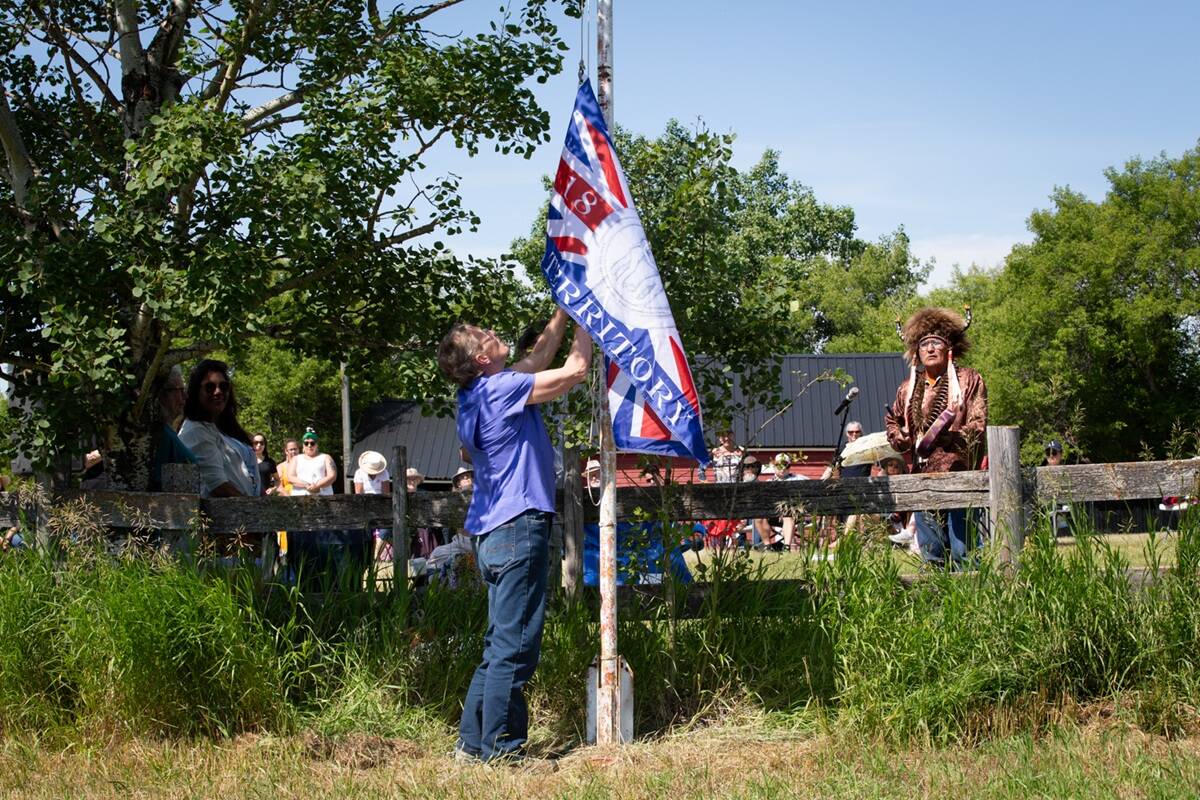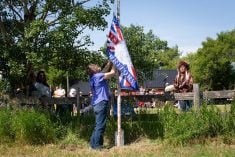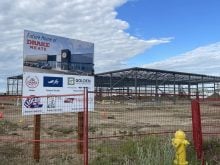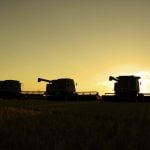The Braaten’s cattle drives have become a highlight of the spring and fall for many families around Birch Hills, Sask. But Diane and Dwight Braaten didn’t make the switch to pasture calving just for the fun of cattle drives. It was a matter of time — they wanted to keep their well-established careers and stay in the beef business.
Diane has been with SaskTel for 29 years and Dwight has been a salesman with John Deere Farm and Garden Centre, in Prince Albert for 12 years. Their ties to the land run deep, too. Diane was raised on a mixed farm and has always been an avid horseperson. Dwight is the fourth generation on the Braaten farm established in 1905. He has been involved in making management decisions since he was in high school and went on to study agriculture at Olds, Alta. He had already built up his own herd of beef cows by the time his dad quit farming and they made the decision to sell the dairy operation in 1989.
Read Also

Treaty Land Sharing Network expands reach in Saskatchewan and Alberta
The Treaty Land Sharing Network, which connects land holders with First Nations and Metis people, has expanded since it began in 2018
Four years ago, they found themselves maxed out time-wise with 250 cows. Now they run nearly twice as many and — though they won’t tell you they have lots of spare time — they’re enjoying the beef business more than ever.
There’s no room for problems, they agree. That doesn’t mean there’s never a problem. It does mean paying attention to the small things before they turn into big things. They keep a running to-do list through the year, then review it during the winter to set their course of action.
Their herd health program, animal records, pasture system, wintering facilities, equipment requirements, short-hand labour needs and marketing efforts are rolled into a strategy aimed at increasing efficiency and profitability.
Spring
One significant change triggered an ongoing process of rejuvenation. They moved calving from March through April in the yard, to calving on pasture from May through June.
It was a move they had been considering to get the reproduction cycle in sync with nature. The deciding factor was that it was literally taking days to load and haul the pairs to the pasture six miles away, Diane explains. Three years ago, they let the cows do the work and trailed them to the pasture two weeks before the start of calving to give them time to settle in. Everything had been planned out in advance the summer before when the handling facilities at the pasture were rebuilt and feed was put in place to carry the cows through to the start of grazing.
“The first thing we noticed was that we didn’t lose time on the calves,” Dwight says. It always seemed to take a week or so for the calves to adjust after being transplanted into new surroundings.
Time-wise, checking and feeding the cows on pasture, doesn’t take a whole lot longer than it did when they calved in the yard. The bonus is not having to deal with the cold and the mud, Diane adds.
A typical day begins at five in the morning when they head down to the pasture to tag the calves born through the night. She checks through the rest of the herd while Dwight puts out half the day’s feed. It’s the same routine in the evening and the long daylight hours give them time to take care of the extras.
The first year of calving on pasture went so well and with all of the additional space they felt they could handle an expansion. Adding another 200 cows meant they had to allow more time for checking and feeding up. All told, it takes less than an hour and a half, morning and evening.
Between early and mid-June, the cows start into a rotational grazing system. They’ve been able to build the pasture system into 14 quarters all in a block across a rolling landscape of tame and native pasture. Placing the salt in front of the gate for the next move helps train the herd to the idea of moving to a new pasture every five or six days.
Their theory is that a good whole-herd vaccination program allows antibiotics to expire on the shelf. Little time is lost to treating cattle — or doing the vaccinating, for that matter. In early July, they hire a cowboy crew from the nearby community pasture to help out. Within four hours the job is done.
This is when they make sure every cow has a dangle number tag in each ear. Doubling up does add cost, but it avoids mixups in the record books and saves time having to figure out who’s who when a cow loses a tag.
Summer
The most time-consuming job during the summer months is putting up feed. The old routine was to provide the equipment and hire someone to do the haying. Dwight tried silage for the first time in 2002 when drought stunted the crops in July and August rains brought on a flush of new growth. Up until last year, they hired custom choppers and he did the packing, but it was always a problem finding people to run the trucks when the job had to be done.
This year he entered an agreement with a neighbour who runs a grain farm, cow-calf operation and feedlot. Dwight purchased a JD 7700 self-propelled forage harvester and the neighbour supplied the equipment and labour for swathing and trucking.
He’s not too keen on sharing equipment purchases, but this type of arrangement worked out very well, he says. Within eight days the job was done. Each of them had put up 4,000 tonnes and he was able to do some custom work on the side to help pay for the new harvester.
Last year they purchased three quarters of cropland adjoining the calving pasture with the idea of growing feed there to save the time and expense of hauling it from the main yard. They rented out two quarters this year and the other was sown to barley for silage underseeded with forages.
The additional land near the pasture also opens up the option of swath or corn grazing before bringing the herd home in the fall. Case in point being the delayed harvest this year, which meant that some of the fields they normally cross during the fall cattle drive still had unharvested crop laying out in late October.
They tried corn grazing on the home quarter for two falls. It worked great, Diane says. All they had to do was move the fence 200 paces every Saturday morning. They gave it up two years ago due to the high input cost, but it’s something they’re definitely reconsidering. Lesson learned, they say!
Fall
The fall cattle drive is in mid-to late October. The calves are weaned at preg-checking time in early November. Calf performance weighs heavily in their culling program. For this they rely on Diane’s calving records and notes to review how each cow’s calves performed in previous years. Udders, feet and age are other important considerations.
They aim to sell about half of the calves sometime during the first two weeks of December, when, historically, the market is fairly strong. The rest are backgrounded at home through to March.
Another first was selling the calves through an Internet auction sale last year. This way they could market their investment in vaccinating and age verifying by including the information in the description of the calves. It worked! Their semi-load of 125 steers sold through a TEAM Internet auction last fall brought 18 cents more per pound than anticipated. Both of the final bidders were in the market for age-verified calves and the lot went to a buyer in Quebec.
“Selling calves direct from the farm to a feedlot is something I’ve wanted to do for 19 years,” Dwight says. “It’s less stress on the calves and us because I don’t have to take the price and the calves are still here in the yard.”
All around
They’ve totally rebuilt the feedlot, handling and shop area in the main yard based on guidelines from their environmental farm plan completed three years ago. The design of the handling system is top notch, all aimed at improving safety and saving time.
A heated shop was a priority because they rely on equipment to feed silage. Neither they, nor the hired help need to be dealing with cranky equipment all winter long. Maintaining equipment in good working order is a must if you hope to attract short-hand help, he adds.
They’ve been fortunate to be able to hire people — usually other beef producers in the area — to help with winter feeding and other jobs from time to time, however, that’s been getting more difficult lately as people exit the industry. They count themselves fortunate to have good friends who are more than willing to help out with the cattle drives for the price of a good meal when the job’s done.
Aside from the desire to run a profitable beef operation, Dwight likes the challenge of finding ways to make things work just that little bit better. He counts his customers among his best sources of information when they are looking for new ideas or run up against problems.
Diane is an animal lover at heart. For her, checking the cattle and working with her stock dogs and horses is a real stress reliever. It’s important to keep things organized so that time spent with the cattle is enjoyable.
















